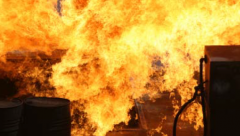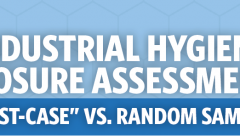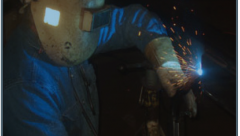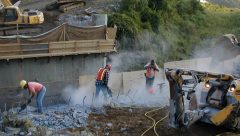Factors Affecting Rated Capacity The first step in creating a lift plan is to understand the factors affecting the strength and stability of mobile cranes. Some of these factors are described below. Machine configuration. Load chart ratings may only be applied if the machine is rigged according to the manufacturer’s specifications. Some questions to consider…
Author: webmaster
By Jerome E. Spear, CSP, CIH From 2011 to 2015, the Census of Fatal Occupational Injuries (CFOI) reported 220 total crane-related deaths, an average of 44 per year over this five-year period (CFOI, 2017). A 2009 study by The Center to Protect Workers’ Rights examined the causes of crane-related deaths based on data obtained from…
A few years ago, I investigated an incident involving a fire that resulted from the transfer of a flammable liquid mixture. A driver of a chemical supplier was delivering a load of product to a customer. The product consisted of a solvent solution containing toluene and other flammable ingredients. As the driver was filling a 350-gallon…
BY JEROME SPEAR, CSP, CIH • J.E. SPEAR CONSULTING, LP An industrial hygiene exposure assessment is the process used to evaluate a person’s exposure to a chemical or physical agent. However, in order to measure a worker’s “actual” exposure, a monitor would be required to be placed in his/her breathing zone each and every day,…
By Jerome E. Spear, CSP, CIH OSHA requires employers to determine Cr(VI) exposures to employees. Options for exposure determinations include initial and periodic exposure monitoring and/or the use of objective data. If objective data is used, the data must reflect workplace conditions closely resembling the processes, types of material, control methods, work practices, and environmental…
By Daniel P. Mahoney, Brian D. Mahoney and Jerome Spear Lawn tractors are a familiar sound throughout suburban neighborhoods as individuals cut their grass each week. Based on a noise dosimetry study, riding on a lawn tractor presents an average noise exposure in the range of 86.5…
Noise, or unwanted sound, is a by-product of many industrial processes. Sound consists of pressure changes in a medium (usually air), caused by vibration or turbulence. These pressure changes produce waves emanating away from the turbulent or vibrating source. Exposure to high levels of noise causes hearing loss and may also put stress on other…
BY JEROME SPEAR, CSP, CIH * J.E. SPEAR CONSULTING, LP Silica dust is hazardous when very small (respirable) particles are inhaled. These respirable dust particles can penetrate deep into the lungs and cause disabling and sometimes fatal lung diseases, including silicosis and lung cancer, as well as kidney disease. From 2005 through 2014, silicosis was…
5 Steps to Successful Exposure Assessments By Jerome E. Spear, CSP, CIH The better our understanding of exposures and the risks they pose, the more assurance we have that we are controlling the most important (highest risk) exposures first. Control efforts (such as engineering, work practice, or personal protective equipment) are often costly to implement…
The Statistical Abstracts of the United States, 105th edition, estimates that 5 to 10 million workers are exposed to heat illness annually. Heat illnesses (such as heat stroke, heat exhaustion, and heat cramps) are caused by hot environments and are preventable occupational health hazards. Heat illness results when the body is out of heat…











